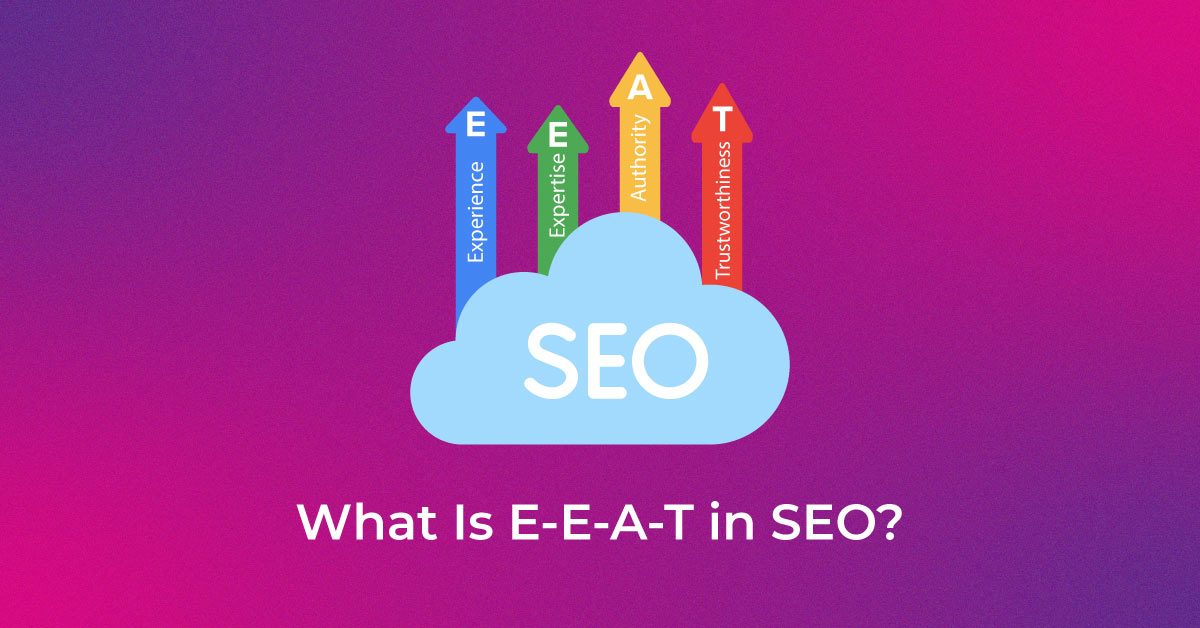Capturing Digital Success: An Introduction
Developing a digital marketing strategy is essential for businesses looking to succeed in today’s online landscape. A comprehensive strategy outlines the tactics and tools you’ll use to reach your target audience, increase brand awareness, and drive conversions. Central to any effective digital marketing strategy is SEO services, which help enhance your website’s visibility and ranking on search engines. By focusing on SEO, you can attract more organic traffic, establish your brand as an authority, and ensure that your marketing efforts yield long-term results. In this blog, we’ll guide you through the key steps to create a digital marketing strategy that accelerates your business growth.
Understanding the Need for a Digital Marketing Strategy
In the digital age, a cohesive marketing strategy is essential to thrive in the virtual marketplace. Without a well-defined strategy, you may find your business wandering aimlessly in an increasingly competitive space. A marketing strategy provides direction and focus, ensuring that each online interaction contributes towards your overall business objectives. It helps to avoid disjointed efforts that can confuse your audience and dilute your message.
The Ever-Evolving Landscape of Digital Marketing
As technology evolves, so does the landscape of digital marketing. You are facing a playing field that changes at breakneck speed, with new platforms, algorithms, and consumer behaviors emerging continually. This dynamic environment demands that you keep pace with trends and adapt to new tools and techniques. Innovation is key; the methods that yielded results yesterday may not strike the same chord with audiences today. It’s a complex but exciting challenge requiring relentless learning and agility to stay ahead.
Foundational Elements of a Winning Digital Strategy
Goal Setting and Identifying KPIs
Setting goals is the cornerstone of any robust digital marketing strategy. Your goals should align with your broader business objectives and be specific, measurable, achievable, relevant, and time-bound (SMART). Once goals are in place, identifying key performance indicators (KPIs) is critical to track progress. KPIs are the metrics that provide insights into the effectiveness of your digital marketing efforts, such as website traffic, conversion rates, or social media engagement. They should reflect your strategic priorities and provide actionable intelligence, steering you toward success.
Crafting Your Unique Brand Voice and Identity
Your brand’s voice and identity are what distinguish you in a crowded marketplace. Crafting a unique brand voice involves delving into the character and values of your company and communicating them consistently across all digital platforms. This voice should resonate with your target audience and be authentic to your brand’s ethos. Your identity encompasses not just the voice, but also the visual elements like logos, color schemes, and typography that coalesce to form a memorable brand image. Together, they should tell a compelling story that captures the hearts and minds of your audience, encouraging them to engage and build a relationship with your brand.
Unleashing the Power of Search Marketing
Mastering SEO for Visibility and Credibility
Mastering SEO is a key component to enhancing your online visibility and establishing credibility in your industry. A well-defined go-to-market strategy integrates SEO as a central pillar, focusing on optimizing content with relevant keywords, enhancing site speed, ensuring mobile-friendliness, and acquiring high-quality inbound links. High rankings on search engines signal to potential customers that your brand is authoritative and trustworthy. Moreover, up-to-date knowledge of Google’s algorithm changes is imperative. By mastering the art and science of SEO, you can ensure that your content is not just seen, but also respected and valued by your intended audience.
Leveraging SEM to Fast-Track Your Results
Leveraging search engine marketing (SEM) can significantly fast-track your digital marketing results. It grants immediate visibility, driving traffic to your site through paid advertisements. Familiarize yourself with platforms like Google Ads—understanding their customization options—and consider utilizing various ad formats such as display, video, or in-app ads depending on your business goals and audience preferences. While SEO efforts gradually build organic presence, SEM offers a quicker route to the top of search results, making it a powerful tool in your digital arsenal to rapidly increase reach and impact.
Content Marketing: The Heartbeat of Digital Outreach
Developing Engaging Content that Resonates
Developing content that engages and resonates with your audience is the heartbeat of content marketing. This content should not only attract attention but also provide value, whether that’s through education, solving problems, or entertainment. Engaging content encourages shares, comments, and interactions, amplifying your reach. To captivate your audience, focus on storytelling that taps into emotions and experiences that your audience can relate to. Content can come in many forms such as blog posts, videos, infographics, and podcasts, so choose the mediums that best suit your message and audience preferences.
Tips for Creating Engaging Blog Content
- Leverage Live Videos: Showcase your brand’s human side with behind-the-scenes glimpses. Add interactive features like Q&A sessions, polls, and live chats for real-time engagement.
- Focus on Educational Content: Share knowledge that aligns with your brand’s mission, offering value beyond your products or services.
- Incorporate Storytelling: Use emotion-driven narratives to connect with your audience and reflect your brand’s values.
- Explore Podcasts and Interviews: Create podcasts or conduct interviews to add conversational depth while boosting SEO and authority.
- Maximize Video Content: Post and embed videos on your website and ads to capitalize on video’s high conversion rates without requiring a big budget.
- Use Automation Tools: Schedule posts with tools like Hootsuite to reach your audience at peak times across various time zones.
- Curate Reputable Content: Share credible third-party content to showcase expertise, build authority, and encourage reciprocal promotion.
- Collaborate with Influencers: Partner with influencers to expand your content’s reach authentically on social platforms.
- Prioritize Mobile-Friendly Content: Optimize your strategy for mobile consumption, as smartphones dominate digital usage.
- Adopt Marketing Automation: Deliver content efficiently to mobile audiences at optimal times for better engagement.
Maping Your Content to The Buyer’s Journey
Mapping content to the buyer’s journey is essential for nurturing potential customers through to a conversion. Content should be tailored to meet the informational needs of customers at each stage: awareness, consideration, and decision. During the awareness stage, focus on educational content that addresses the customer’s problem. In the consideration stage, help them evaluate solutions with comparison guides, webinars, or case studies. Finally, at the decision stage, present compelling reasons to choose your solution, such as testimonials, demos, or free trials. This strategic alignment ensures that your content supports the customer’s journey, guiding them gently toward choosing your service or product.
Social Media Strategies: Nurturing Relationships at Scale
Choosing the Right Platforms for Your Audience
Choosing the right platforms is about finding the digital spaces where your audience naturally congregates and is most receptive to your message. It’s not solely about the size of the platform’s user base; it’s crucial to consider the demographics, habits, and preferences of your target market. If your audience is composed of professionals and industry leaders, LinkedIn could be your focal point. Conversely, if you’re targeting a younger, more visually oriented crowd, platforms like Instagram and TikTok might yield better engagement. The key lies in understanding the unique attributes of each platform and the ways your audience uses them, so you can craft a presence that feels native and authentic.
Creating Share-worthy Social Campaigns
Creating share-worthy social campaigns involves producing content that is not only relevant and engaging but also worthy of being passed along within your target audience’s networks. Consider what makes content shareable—emotional impact, relatability, practical value, or even humor. Your social campaigns should encourage interaction and participation, possibly through polls, contests, or user-generated content initiatives. Visual elements like eye-catching images or videos are more likely to be shared, enhancing the virality potential. Ultimately, share-worthy content has a self-replicating power that can significantly amplify your message and boost your brand’s social currency.
Email Marketing: Your Direct Line to Customers
Building and Segmenting Your Email List
Building and segmenting your email list are pivotal steps to personalize and enhance the effectiveness of your email marketing campaigns. Start by offering something of value to your visitors, such as a lead magnet or content upgrade, to encourage signups. Using tools such as slide-in forms or subscription boxes on your site can help capture potential subscribers without being intrusive. Once you have a growing list, segment it based on criteria like engagement level, purchase history, or demographics to tailor your communication. Segmentation allows for more targeted and relevant emails, increasing open rates, reducing unsubscribe rates, and resulting in better overall performance.
Designing Email Campaigns That Drive Action
Designing email campaigns that drive action entails crafting messages that resonate with your audience enough to prompt the desired response, whether that’s making a purchase, signing up for a webinar, or just engaging with content. Start with appealing subject lines that pique curiosity without veering into clickbait territory. Personalize your emails where possible, using data from segmentation to address the recipient directly and relevantly. Include clear calls-to-action (CTAs) that stand out and guide users on what to do next. Finally, ensure your email design is responsive, visually appealing, and aligned with your brand, creating a seamless experience for both desktop and mobile users.
Paid Advertising: Accelerating Your Reach and Impact
Crafting Effective PPC Campaigns
Crafting effective PPC (pay-per-click) campaigns involves several key steps. Start by identifying clear objectives, whether it’s driving sales, generating leads, or increasing brand awareness. Conduct thorough keyword research to target terms that align with your goals but also have an acceptable cost per click (CPC) for your budget. Write compelling ad copy that speaks directly to the needs and interests of your audience, employs strong keywords, and includes a clear CTA. As PPC campaigns are closely tied to landing page quality, ensure that the user experience is smooth and the landing page is optimized for conversion. Monitor and adjust bids to optimize your spend, and analyze performance data to continuously refine your campaigns.
Exploring the Benefits of Display and Retargeting Ads
Display and retargeting ads offer powerful benefits by enhancing visibility and re-engaging visitors who didn’t convert on their first visit. Display ads can boost your brand awareness by visually showcasing your products or services across various websites your target audience frequents. They are versatile, allowing for rich media formats such as images, audio, and video to attract attention.
Retargeting takes this one step further by specifically targeting users who have previously interacted with your brand, serving them personalized ads that are relevant to their interests and behaviors. This approach often results in higher conversion rates as it reminds and incentivizes users to return to your site, therefore maximizing the ROI of your digital efforts. Display and retargeting ads offer multifaceted benefits as part of a comprehensive digital marketing strategy.
Advantages of Display and Retargeting Ads:
- Extended Reach: Display ads can reach billions of users across social platforms and websites, increasing potential customer encounters.
- Precise Targeting: Target ads based on demographics, interests, and behaviors for a more effective ad spend.
- Re-Engage Interested Users: Retarget ads to users who have interacted with your website, moving them further down the sales funnel.
- Brand Recall: Repeated exposure through retargeting builds familiarity and trust, keeping your brand top-of-mind.
- Higher Conversion Rates: Engage warm leads already familiar with your site, boosting the likelihood of conversions.
- Cost-Efficiency: Pay-per-click models ensure that your marketing budgets focus on high-potential users, maximizing pricing strategies by optimizing spend on targeted ads and keywords.
- Competitive Edge: Target users interested in similar products, stay in contention even after they leave your site.
- Data-Driven Insights: Use engagement data to refine strategies, personalize ads, and address user pain points.
- Agility in Campaigns: Optimize campaigns quickly with adaptable media-buying platforms.
Conclusion:
Display and retargeting ads offer broad reach, targeted engagement, and increased conversions. By leveraging these tools, businesses can navigate digital marketing effectively, foster loyalty, and drive sales growth.
Measuring Effectiveness and Making Data-Driven Decisions
Analyzing Campaign Performance through Analytics
Analyzing campaign performance through analytics is fundamental in measuring success and identifying areas for improvement. Utilize digital analytics dashboards like Google Analytics to monitor metrics pertinent to your KPIs. Evaluate the traffic acquisition from various marketing channels to understand which ones drive the most conversions. Segment data to gain insights into how different user groups interact with your campaigns. Look beyond surface-level metrics like clicks and impressions; dive into engagement, bounce rates, and conversion paths. This analysis enables you to pinpoint which elements of your campaigns resonate with your target audience and empowers you to reproduce this success in future endeavors.
The Art of Continuous Optimization
The art of continuous optimization in digital marketing lies in constant monitoring and tweaking of your strategies and campaigns to improve results over time. It’s about basing decisions on what the data tells you, running A/B tests to determine the best-performing elements, and remaining agile enough to pivot when necessary. Consider user feedback and engagement to refine content, user experience, and messaging. Optimization is a cycle of measuring, analyzing, and adjusting – always with the aim of enhancing user engagement and achieving a higher ROI. Remember, what works today may not work tomorrow, so keep innovating and adapting.
Future-Proofing Your Digital Marketing Strategy
Embracing Technological Advances and Trends
Embracing technological advances and trends is crucial in keeping your digital marketing strategy relevant and competitive. Staying on top of developments like AI SEO tools, VR, and chatbots can provide new ways to engage customers. For example, AI SEO tools can personalize user experiences at scale, while VR has started to create immersive brand encounters. Watch for patterns in consumer adoption of new technologies to determine where your marketing efforts could benefit from innovation. Keep learning and experimenting, but always align these advances with your brand’s authentic voice and your customers’ expectations. This forward-thinking approach will help your strategy remain future-proof and resilient to changes in the digital landscape.
Staying Flexible in a Dynamic Digital Environment
Staying flexible in the dynamic digital environment is essential for the longevity and effectiveness of your marketing strategy. Flexibility enables you to swiftly adapt to market changes, algorithm updates, new platform features, and shifting customer behaviors. Avoid rigid strategies; instead, hold regular reviews to assess what’s working and be prepared to shift resources and focus to more effective tactics. The willingness to pivot becomes a competitive advantage, allowing you to exploit emerging opportunities and minimize the impact of any unforeseen challenges. Maintain an experimental mindset, test new approaches, and be ready to iterate on your strategy in response to performance data and industry trends.
FAQs About Elevating Your Digital Marketing
What Are the First Steps in Developing a Digital Marketing Strategy?
The first steps in developing a digital marketing strategy involve defining your brand’s goals and understanding your target audience. Establish SMART objectives that are aligned with your company’s broader goals. Conduct market research and use analytics tools to gather insights into your audience’s behaviors and preferences. This foundational work sets the stage for creating a strategy tailored to guide your digital campaigns toward achieving tangible business outcomes.
How Can Small Businesses Compete with Larger Brands Online?
Small businesses can compete with larger brands online by leveraging their unique selling propositions and building a strong community presence. It’s about focusing on niches, providing exceptional customer service, and capitalizing on agility to implement innovative strategies swiftly. They should also maximize local SEO, utilize customer reviews, and take advantage of the cost-effectiveness of social media to engage more personally with their audience.
Are There Low-Cost Digital Marketing Tactics for Startups?
Absolutely, startups can explore several low-cost digital marketing tactics. Content marketing stands as a powerful tool; creating high-quality blogs, videos, or podcasts can attract and engage audiences at minimal expense. Social media platforms offer free profiles for reaching and interacting with potential customers. Additionally, email marketing provides a cost-effective channel for personalized communication. Startups should also harness SEO to increase organic reach without the need for a large budget.
How Often Should I Review and Adjust My Digital Marketing Plan?
You should review and adjust your digital marketing plan at least quarterly. This frequency allows you to analyze the performance data, understand market trends, adapt to any significant changes, and optimize your strategies. However, be prepared to make more immediate adjustments in response to real-time feedback or sudden shifts in the digital landscape.
Popular Searches
How useful was this post?
0 / 5. 0













